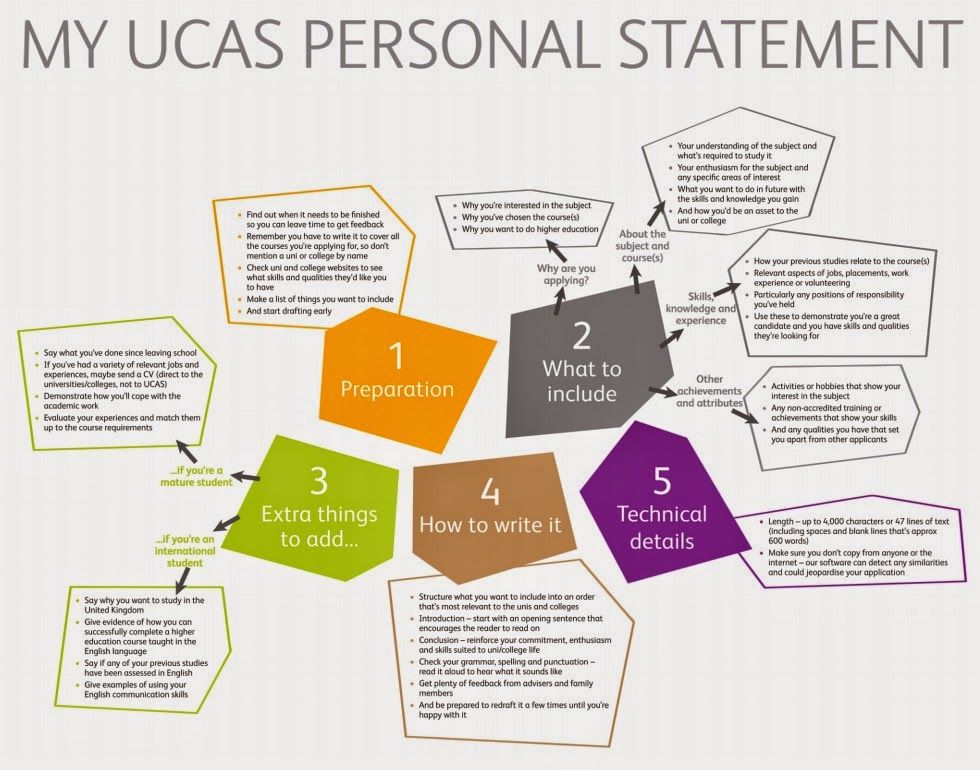How to set up a college fund for your child
How To Open A 529 College Savings Plan
With total student loan debt in the U.S. pushing to about $1.8 trillion, according to estimates from the Federal Reserve, millions of parents may be left scratching their heads over how to fund their children’s academic future.
There are a number of alternative ways to pay for college beyond student loans — but they require a bit of planning. One of the most viable savings vehicles that give account holders the best value are 529 college savings plans.
A 529 college savings plan can be a great way to help your future student cut down on student loan costs. Plus, these special savings plans provide some valuable tax benefits, making them beneficial for the person paying into them as well.
A 529 plan comes in two major types: (1) a college savings plan, which allows you to invest money in potentially high-return assets such as stocks, and (2) a prepaid tuition plan, which allows you to purchase part or all of the tuition at an in-state school.
If you’re looking to get up to speed, you can read about 529 plans and their many advantages.
Otherwise, here’s a step-by-step guide to opening a 529 savings plan.
Step-by-step guide to opening a 529
Parents shouldn’t be intimidated by opening a 529 plan. In fact, the process is relatively simple.
“The biggest hurdle for parents is there’s the fear of getting in there and you need someone to push you to do it,” says Megan Gorman, a personal finance expert and founding partner of Chequers Financial Management. “But the system is set up so well and there are so many cost-effective plans that do all the work — parents just need to open the account and put some money to work.”
Opening a 529 can be completed in (as little as) these four steps:
1. Select a plan
You’ll have to choose between a savings plan or a prepaid plan. According to Gorman, parents can open a plan with any provider, regardless of state — but she recommends prioritizing the quality and cost of the plan you choose to invest in first, and then consider any state tax benefits the plan may provide.
“This is important as you don’t want to invest in an expensive plan that underperforms just because of the tax benefit,” Gorman says.
Every state and the District of Columbia offers a 529 plan. It is even possible to open multiple 529 plans in multiple states.
However, each state’s 529 plan has its own set of advantages, and they are limited to residents in some cases. For example, there may be a state income tax credit only available to residents of the state offering the plan.
There are other considerations, too, such as enrollment fees and minimum contribution amounts. If you want to know how to open a 529 plan, the College Savings Plan Network (CSPN) has a comparison of 529 plans across different states. It also has a map that lets you easily find your state’s plan.
If you aren’t sure which provider or plan works best for you, consider contacting a financial advisor for advice. A 529 plan broker may also be able to give you assistance.
2. Choose a beneficiary
This will likely be your child — but remember, you can change the beneficiary at any time without penalty. You will need the beneficiary’s date of birth and Social Security number. Since most plans have age-based options, meaning they have a target-allocated fund that reallocates based on a child’s age, it’s best to open an individual account for each child.
You will need the beneficiary’s date of birth and Social Security number. Since most plans have age-based options, meaning they have a target-allocated fund that reallocates based on a child’s age, it’s best to open an individual account for each child.
In general, anyone can be the beneficiary of a 529 plan; it is not limited to children or any other type of relationship. The beneficiary must be a U.S. citizen or resident alien and have a Social Security number or tax identification number. As long as those requirements are met, there are no restrictions on whose name can be on the plan. In fact, even the person opening the 529 plan can be its beneficiary.
3. Open the account
Most accounts can be opened online. Once opened, you can deposit funds directly into the account, and only some plans require a minimum deposit for opening. Be sure to keep an eye out for any fees associated with providers and plans. Plans may charge annual fees, account opening fees and fees for the assets being managed. Always read the fine print.
Always read the fine print.
The information you will need to open a 529 account may vary by plan. In general, though, expect to be asked for details such as Social Security number (or tax ID), date of birth, and address. You must provide that information for both yourself (or the person opening the plan) as well as the beneficiary.
A 529 plan works much like other types of investment accounts. You can use age-based investment strategies; conservative, moderate, or aggressive investment mixes; or a mix of funds. And like other investment accounts, you can also set up automatic investments, so you don’t even have to remember to invest.
4. Build your portfolio
If you’ve chosen a savings plan, you can choose where to invest your money. Most providers offer both actively and passively managed investments, says Gorman — but she recommends using aged-based funds.
“These funds are similar to target retirement funds,” Gorman says. “They automatically adjust the asset allocation based on the child’s age. ”
”
That means the funds become more conservative as the date for tapping the funds nears, helping to ensure that you have the money when you need it.
If you need help, some plans have advisory fees — but be sure to review these beforehand.
“It’s really easy — you don’t need to be sophisticated or need someone who is sophisticated to open it for you,” says Leslie H. Tayne, Esq., founder and director of the Tayne Law Group in the New York City area. “Don’t be discouraged because it sounds complicated, because it’s not.”
Important 529 plan rules to know
Since 529 college savings plans provide tax incentives, the IRS writes strict rules to ensure they aren’t being taken advantage of. While contributing to a 529, keep these important rules and restrictions in mind:
Anyone can be named a beneficiary, including yourself, and there is no limit to how many plans you can set up.
Contributions cannot be more than the amount needed to provide for qualified expenses of the beneficiary, according to the Securities and Exchange Commission (SEC). The SEC also cautions to “be aware that there may be gift tax consequences if your contributions, plus any other gifts, to a particular beneficiary exceed $15,000 during the year.”
The SEC also cautions to “be aware that there may be gift tax consequences if your contributions, plus any other gifts, to a particular beneficiary exceed $15,000 during the year.”
Gorman does point out, though, that most Americans won’t come close to reaching the maximum contribution.
“Parents get very apprehensive that they’re going to overfund a plan — but most people don’t even really get close,” Gorman says. “So overfunding really should not be of concern.”
Balances in 529s could affect financial aid rewards. Balance amounts are taken into the expected family contribution (EFC) amounts, but Gorman points out the calculation used will vary, depending on who owns the account. For example, if a parent owns the account, the amount considered in the family contribution is around 5 percent. If someone else were to own the account, like grandparents, distributions could reduce eligibility for need-based aid by as much as 50 percent. If the student owns the account, eligibility could be reduced by as much as 20 percent of the asset value.
“It does seem a bit draconian, especially in the day and age where college costs are so high and it really, truly takes a village.” Gorman says. “It’s a bit unfair, but they’re trying to make sure people don’t start gaming the system.”
Gorman adds, however, that considering financial aid implications should “never be a deterrent” when choosing to open a 529 plan.
What happens if your child doesn’t go to college
Since a 529 savings account is specifically for educational costs and provides tax benefits, there will be penalties if the money is not used for its intended purpose. According to the IRS, withdrawn funds used for anything other than tuition and qualified expenses will be subject to income tax and face a penalty on the earnings.
There are, however, instances when these penalties may be waived, including:
- The beneficiary receives a tax-free scholarship.
- The beneficiary attends a military academy.
- The beneficiary dies or becomes disabled.

If your child chooses to sidestep higher education altogether, you won’t lose the money in the accounts. Instead, you have the option to change the beneficiary — which you can change to yourself for future education or for grandchildren. Anyone can be named a beneficiary, and there aren’t any rules capping how many times a 529 plan beneficiary can be changed.
In addition, 529 plans can now be used to pay for other related education costs:
- Private tuition at K-12 institutions
- Apprenticeship programs, as long as they’re registered with the Department of Labor
- Repayment of up to $10,000 in student loans
This variety of options gives parents and others many ways to avail themselves of the 529 plan.
How to get help with a 529 plan
You have a few options when it comes to finding help with a 529 plan.
If you’re looking for some of the best plans, you’ll want to consider low costs, good benefits and a solid track record of investment performance. Here are some of the best 529 plans available.
Here are some of the best 529 plans available.
If you invest directly with a state plan, you’ll have to manage the whole process yourself: registering, researching the investments and tracking the plan over time. However, you can also open a 529 plan through a broker, who can set you up with one of several state plans. This method also may allow you to use the advice of an investment professional, who can help you arrange the plan and oversee it through the years.
Finally, you can always turn to a certified financial planner, who can assist in choosing the right state plan for your needs and choosing the best investments. Look for a planner who has experience specifically with 529 plans and ideally one who is a fee-only advisor.
A 529 plan is not the only way to pay for college, and there are many unusual ways to stock away cash, while even getting a tax break in some cases.
Bottom line
Overall, 529 college savings plans are viable options for people looking to grow savings for educational costs.
The most important thing to keep in mind about 529 plans, says Tayne, is that they should be opened as soon as possible, giving the money time to grow. She acknowledges that this can be difficult for young parents who are early on in their careers, citing her own experience.
“When my kids were little, I didn’t have the money to spare,” Tayne says. “So I think what ends up happening is that unfortunately, when you have little kids, it might be difficult to put money into the account each month. But honestly, it’s never too late to open [a 529 savings plan].”
How to Start a College Fund for Your Child
Pay Save
The cost of college is on the rise, and no generation knows that better than millennials. Many young parents today are still paying off their own student loans; while trying to save for their children’s education. The good news is, starting a college fund while your child is young gives you a good amount of time to create a solid nest egg for their future. The decision now is where to put your money?
The decision now is where to put your money?
Bank Savings Account
For many parents considering how to start a college fund for their child, the first step may be a savings account at a local bank. It’s an easy way to put money aside for the future. Most banks will let you open a savings account with a small deposit and you can set up automatic transfers from your checking account to keep the fund growing. Interest rates for savings accounts are relatively low, providing about a 2 percent annual percentage yield (APY).
There is really no risk of losing your money with a savings account, as long as you choose a bank that’s federally insured. So, if your bank does happen to fail, the account is safe up to $250,000. Another benefit of a savings account is easy access to your money.
There are no penalties if you decide to use the account for a vacation instead of an education. But that may also be a temptation. So, if you’re likely to blow every penny on a trip to Disney World, this could be the wrong savings vehicle for your family.
Mutual Funds
For investors with a higher tolerance for risk, mutual funds may be a good path to save for college. Mutual funds offer diversification and potential for rapid growth, allowing your money to work harder. They are also easy to buy and sell through a broker or online account.
However, mutual fund distributions could mean you’re paying capital gains taxes on your investment every year, even if you don’t sell your shares. And when you do sell the fund to pay for college, you’ll pay taxes again. Speaking of college expenses, if you need to sell part or all of the mutual fund to pay your child’s college bill by a specific date, you could find yourself at the mercy of a down market swing. Another thing to remember, if the mutual fund account is in your child’s name, it could reduce their financial aid eligibility by 20 percent.
Coverdell Education Savings Accounts (ESAs)
Coverdell savings accounts gained popularity because the funds grew tax-free and could be used for elementary and secondary education expenses, as well as for college. However, many 529 plans, such as the NC 529, have changed their rules recently, to allow funds to be used for K–12 tuition at public and private schools.
However, many 529 plans, such as the NC 529, have changed their rules recently, to allow funds to be used for K–12 tuition at public and private schools.
ESAs also have strict contribution limits. You can’t deposit more than $2,000 per student, per year. And when the student turns 18, they take control of the account. That means the student can spend the money on anything they want, like spring break in Hawaii.
529 Savings Plans
Almost every state, including North Carolina, has a tax-advantaged 529 education plan. The name refers to section 529 of the Internal Revenue Code (IRC). The plans were added to the IRC in 1996 to encourage saving for higher education. The Tax Act of 2017 now allows the funds to be used for K–12 tuition. Financial experts say 529 plans are the smartest way to save for college.
Although 529 plan contributions cannot be deducted from your federal income taxes, the earnings grow tax-free and withdrawals are not taxed if they are used to pay for qualified education expenses. Those include:
Those include:
- K–12 tuition
- College tuition
- Trade or technical programs
- Room and board
- Books, fees, and supplies
- Technology and computers
- Services and equipment for students with special needs
- Apprenticeship Programs
- Qualifying student loan payments
Investment options for an NC 529 Plan include mutual funds and cash reserves, to match your investment risk tolerance. Choose to be more hands-on with your investments or select an age-based portfolio that automatically moves funds out of riskier stocks and into bonds and cash reserves as the time for college draws near.
Other benefits of an NC 529 education plan:
- Makes saving simple with automatic payroll deductions or bank transfers.

- Family and friends can add to the account as gifts for birthdays or special occasions.
- Open an account in just a few minutes with a minimum $25 contribution.
For parents of very young children, you might be asking yourself, “What if my child doesn’t end up going to college?” No problem. Your 529 funds can be transferred to a sibling or another family member. Or you, yourself, may decide to go back to school, and the money will be there for you. If your child decides to pursue a career in cosmetology, automotive, or other industry, a college savings plan also can be used to pay for trade or technical school.
The bottom line is, the sooner you start saving for college the more time the funds will have to grow. To learn more about how to start an NC 529 college fund for your child, visit NC 529 FAQs.
Categories:
PaySave
Go Back to News4 Effective Ways to Start a Children's Charity Fund
Making a conscious effort to save your child's future can be troubling and require consistent effort. Often the question arises: "How to save money for the sake of the unborn child?" Getting help from family members who enjoy funding is also a great start.
Often the question arises: "How to save money for the sake of the unborn child?" Getting help from family members who enjoy funding is also a great start.
Do you want to secure your child's future and feel financially liberated? Well... we offer some smart solutions that will greatly protect you and your child on a rainy day. Get involved in setting a long-term savings goal that is sustainable, viable, and profitable. There are some simple money saving tips to get you started in the right direction. Follow them and fulfill your dream of sending your child to the best college. Give him a future that he will be proud of.
1. Start early
It is important for any savings project to start as early as possible. This ensures that your child will have enough when they are old enough for school and college. As soon as your baby is born, start putting aside a small portion of your earnings for him. In the long run, this will be a great investment. A little really makes a big difference in this case. However, you don't actually need to cut spending to save aggressively. It doesn't have much of an impact. In the beginning, it is enough to save only 10% of earnings.
However, you don't actually need to cut spending to save aggressively. It doesn't have much of an impact. In the beginning, it is enough to save only 10% of earnings.
2. Consistent provision
Before you start saving for your child, choose a specific amount you are willing to spend each month. Perhaps in a year or two, try to increase the amount of savings by a small percentage and in accordance with your abilities. It should actually make a difference when your child is old enough to benefit from it. A small increase in the amount of money you invest in one month will not have a huge impact on your money. You won't feel it. The amount, when you slowly increase it, will amount to something really important in the long run.
3. Tax Saving Benefits:
If the money you save at or outside of university is used, you can take full advantage of tax-free funding methods. Without taxes? Yes, you heard right. Investing in savings bonds or opening an educational savings account will be very beneficial for your child.
However, the big catch is that these savings It will be used and can only be used for educational purposes. But it can be used in a number of academic courses and is not limited in any way. Since most courses currently cost a fortune, taking advantage of these opportunities will help you and your child stay in good shape. Be sure to consult a financial advisor before making any investment. This is a smart move.
4. Teach your children how to save money
The hard way of raising children will instill in them a sense of responsibility and good values. If you give your child everything on a silver platter, chances are he won't appreciate everything he gets.
Although you may have the resources to create a college fund for your child, involve him in saving for his future. Ask him to contribute when he can. Give him a piggy bank. As he participates in this process, he will learn not only to appreciate the value of money but also to respect the benefits he will reap in the future.
These tips for saving money for your child's future should be implemented as soon as they take their first step. As expenses rise day by day, it is essential that the savings process be started, continued and maintained. Apply these savings tips and give your child financial protection to protect them at all times.
5 Common Mistakes When Setting Up Your Child's Trust Fund - Financial Encyclopedia
The term "trust fund child" is associated with negative stigma. It evokes images of privileged children who grew up with all the material things that money could buy. While this may be true in some cases, this is far from the norm when it comes to trust funds.
Most people would be surprised how many trust funds have been set up for children. It has nothing to do with giving an excessive amount of money so that the young man can buy whatever he wants. Instead, a trust fund is set up so that if the parents are not around to provide for the child, the child has a source of income and the assets needed to survive. (See also: How to start a trust fund if you're not rich.)
(See also: How to start a trust fund if you're not rich.)
If you have life insurance, this probably sounds familiar. In fact, if you have life insurance and your minor children are the beneficiaries, they will have a trust fund set up in case you pass away.
Unfortunately, parents make a number of mistakes when setting up trust funds for their children. Many of them are the result of not knowing how these funds are supposed to work.
If you have a great lawyer working for you, many of these problems will never arise. However, it often happens that something slips out of order or the person opening the trust simply does not have the necessary experience. Here are some of the most common mistakes parents make when creating trusting relationships for their children.
Key takeaways
- When setting up a trust fund for your children, be sure to choose the right caregiver, remembering that a family member may not always be the right person.
- Be aware that young people are not very good at managing money and set limits on what they can withdraw money for, especially when they are under 25 years old.

- Make sure your paperwork is in order and that the correct beneficiaries are listed, including the name of the trust when applicable.
- Be sure to review the trust each year to make sure you continue to feel comfortable with the trustee and other aspects of the plan.
- Be aware of college planning and how money in a trust can affect any student loan or scholarship application your children have.
Choosing the wrong trustee
Choosing a trustee is not that difficult. You think that because your children have a great relationship with your brother or sister (their aunt or uncle), they will be great guardians. Even if that family member agrees to take on this role, financial control of your children's assets may not be in his or her best interest. This is especially true if the trust is set to give full control to a child at age 25, and the trustee must be the bad guy and prevent your children from having access at age 23.
The best alternative to a family member is to let the bank act as trustee. To maintain that personal touch, let the bank and its sister act as co-trustees. (See also: What are typical trust fund management fees?)
To maintain that personal touch, let the bank and its sister act as co-trustees. (See also: What are typical trust fund management fees?)
Overview
Creating a trust fund for your minor children will allow them to access funds they may need in the event of your death.
Set the wrong goals
Most young people are not responsible for money. Even if your children become adults at the age of 18, it is most likely not in their best interest to have complete control over money at this age.
When you create a trust, you decide how the money can be spent before you reach the age of majority. Hospital bills, education, and marriages are common reasons for withdrawing money. Anything else, and you can set up a trust so that no money can be received until a certain age is reached.
Assigning the wrong beneficiary
When you buy life insurance, you decide who the beneficiary is. After you set up your trust, did you change the name of the beneficiary from your children's name to the name of the trust?
Unless otherwise stated, the assets will be transferred to you and not to a trust fund you have set up for your children.
Do not renegotiate the trust annually
When you set up a trust, you may have chosen a responsible family member to act as trustee. After 10 years, you forgot about this appointment, but you watched this family member become depressed, possibly addicted to drugs or alcohol, and accumulate a criminal record. Is this the one you still want to be in charge of your kids' finances?
As with life insurance, investments, and general financial planning, you'll want to review a trust every year to make sure it continues to fit your desires and current general realities.
Forget about college planning
The most common trust funds for children are USMA or UTMA accounts. They are generally very easy to administer and you just need to add money to them regularly to make sure they are fully funded. But did you know that these accounts must be listed as assets owned by a minor when they apply for college financial aid? If they have any basis in them, they can end up disqualifying your child from grants, scholarships, or sometimes even loans.












